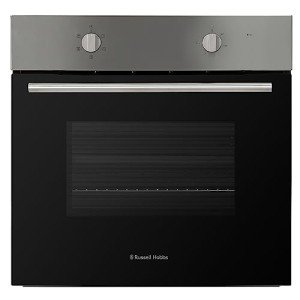The Rise of Built-In Ovens: A Seamless Approach to Modern Cooking
In contemporary kitchen areas, where style aesthetic appeals blend effortlessly with functionality, one home appliance sticks out as a real game changer: the built-in oven. As property owners and chefs alike continue to seek innovative services that boost their cooking experience, built-in ovens have actually ended up being significantly popular. This article explores the advantages, factors to consider, and trends surrounding built-in ovens, highlighting why they are a necessary function in contemporary cooking areas.
What is a Built-In Oven?
A built-in oven is a kitchen area device created to be integrated into the cabinetry of a cooking area rather than standing alone. Unlike standard freestanding ovens, which can be moved and placed anywhere, built-in ovens come in various styles and sizes to fit particularly within designated spaces. Readily available in single or double configurations, these ovens use a streamlined look that matches contemporary cooking area styles.
Advantages of Built-In Ovens
1. buy built in oven -Saving Design
Among the most enticing advantages of built-in ovens is their space-saving style. By incorporating the oven into kitchen cabinetry, you can maximize important counter and floor area. This is particularly beneficial in smaller sized kitchens, where optimizing room is vital. Built-in ovens can be set up at eye level, making them more accessible and minimizing the need to bend down.
2. Visual Appeal
Built-in ovens contribute to a sleek and cohesive kitchen design. Readily available in numerous surfaces-- such as stainless steel, black, white, and custom-made cabinetry-- they can blend seamlessly into the overall decor. This visual appeal enhances the cooking area's visual harmony and raises the area, producing a modern and sophisticated atmosphere.
3. Boosted Functionality
Lots of built-in ovens come equipped with advanced cooking technologies, such as convection cooking, steam ovens, and wise functions. These enhancements permit versatile cooking options, making it simpler to accomplish professional-level results in the house. Smart built-in ovens can even link to Wi-Fi, allowing users to manage the oven from another location, get notifications, and access a range of cooking programs and dishes.
4. Improved Ventilation
Since built-in ovens can be integrated with kitchen area hoods and ventilation systems, they can help keep better air quality and reduce cooking odors. This is specifically significant for those who like to cook with aromatic spices and ingredients, as an efficient ventilation system can keep the cooking area comfy and welcoming.
5. Customization Options
Built-in ovens provide a wide variety of modification alternatives to match private cooking styles and requirements. From professional-grade devices with several cooking modes to compact designs for smaller kitchen areas, property owners can select the oven that fits their specific requirements. Many manufacturers likewise offer customizable front panels, permitting you to match the oven's look to your cabinetry for a really unified appearance.
Factors to consider When Choosing a Built-In Oven
While built-in ovens have many benefits, there are important considerations to bear in mind before buying:
1. Price
Built-in ovens normally come with a higher price than their freestanding equivalents due to their design and installation requirements. It's essential to consider both the cost of the oven and any extra expenses associated with cabinets modifications or setup.
2. Setup Requirements
Setting up a built-in oven typically needs professional assistance, particularly if you need to modify existing kitchen cabinetry. Make sure that you consider any expenses connected with setup, including labor and prospective kitchen cabinetry modifications.
3. Size and Dimensions
Before purchasing a built-in oven, determine the designated space properly to ensure an appropriate fit. Built-in ovens come in numerous sizes and configurations, so selecting one that lines up with your needs and kitchen design is essential.
4. Lifestyle and Usage
Consider your cooking habits and requires when picking a built-in oven. If you frequently host large events, a double oven might be more beneficial. On the other hand, if you have a compact kitchen, a single-wall oven may suffice.
Patterns in Built-In Ovens
The kitchen device market is continually developing, and built-in ovens are not exempt from emerging trends. Some present patterns include:
Smart Technology Integration: With the rise of clever home innovation, built-in ovens now frequently include connectivity alternatives. This allows users to monitor cooking progress and change settings via mobile apps.
Energy Efficiency: As sustainability ends up being a concern, many producers are investing in energy-efficient built-in ovens that lower energy consumption while maintaining efficiency.
Multi-functional Designs: Built-in ovens now use features such as air frying, sluggish cooking, and steaming, providing versatility that fulfills a large range of cooking techniques.
Conclusion

Built-in ovens unquestionably represent a best mix of style, function, and benefit in today's kitchens. As more property owners go with this contemporary solution, the focus moves to producing a cooking area that is as visually pleasing as it is useful. Whether you are developing a brand-new home or remodeling your cooking area, thinking about a built-in oven could elevate your cooking experience and transform your kitchen area into an elegant and practical haven. With a variety of choices offered and ongoing innovations in innovation, built-in ovens stay a standout choice for both beginner cooks and cooking enthusiasts alike.
